From Jimmy Stewart’s captivating performance in Anatomy of a Murder to the shocking reversals in Witness for the Prosecution, from the noirish colonial atmosphere of 1940’s The Letter to the underdog-getting-his-groove-back formula of 1982’s The Verdict, from the gripping climax of every episode of Law & Order to that twisted scene at the beginning of Better Call Saul, for decades we’ve been getting some of our best fiction in the form of courtroom drama. Trial cases are just ripe for this kind of exploitation, what with the clearly-defined conflict between (at least) two parties, the crime investigation angle, the psychological tricks that go with the questioning, the palpable tension in the room, all those rules and rituals, the emotional final speeches, and the suspenseful build-up until the verdict/resolution is announced.
Nevertheless, this is one genre that hasn’t found much of a place in Batman comics, perhaps because it revolves around characters pursuing justice by standing there (or sitting down) and talking to each other for a very long time, whereas stories about the Dark Knight tend to go more for masked vigilantes jumping off buildings and quickly kicking thugs in the face.
Sure, there have been a few exceptions… The Caped Crusader’s crazy world has spilled into the court system on more than one occasion:
‘Stepping Forward’ (Gotham Adventures #35) has Bruce Wayne assigned jury duty, which means he has to decide whether or not to convict a man Batman helped arrest. In a cool twist on the classic 12 Angry Men (another powerful trial movie), all the jury members think the defendant is not guilty, so it’s up to Bruce to convince them otherwise.
The brilliant graphic novel The Joker: Devil’s Advocate has a lot of fun showing us what happens when the Clown Prince of Crime is taken to court, after a killing spree over the fact that he was not included in a special stamp collection about comedians. I’ve always loved Chuck Dixon’s sick take on the Joker and this story is probably the best he’s done with the character (other strong contenders include Robin: The Joker’s Wild, The Demon Laughs, and ‘Fool’s Errand,’ from Detective Comics #726, plus that time the Joker tried to do a film about murdering AzBats). I really can’t recommend this book enough!
Moreover, in ‘The Outlaw Batman’ (Detective Comics #240), the Caped Crusader is arrested and trialed on the suspicion that he has been playing a double game for years, keeping part of the loot of the crimes he has stopped. This one is a typically delirious Silver Age tale that doesn’t make a lick of sense, but it is not entirely devoid of a sort of goofball charm. Plus, let’s face it, this wouldn’t be the oddest crime to happen in Gotham City anyway:
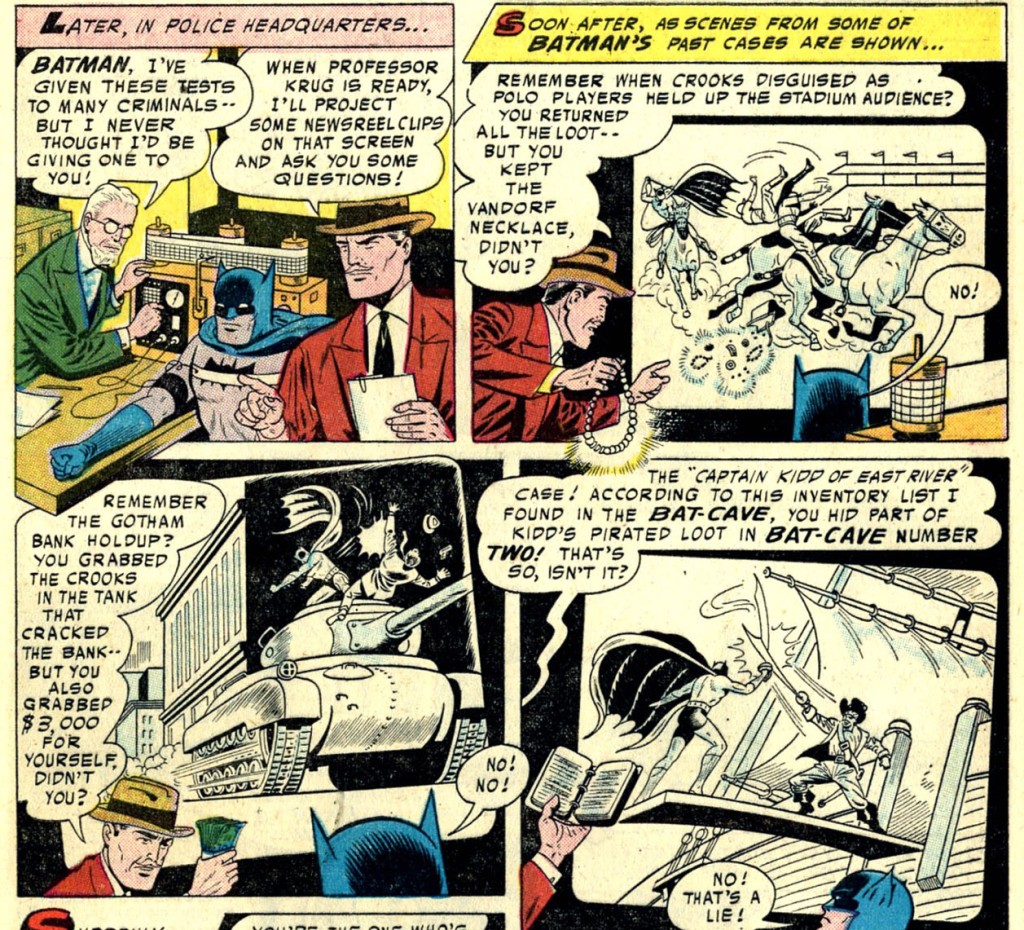 Detective Comics #240
Detective Comics #240
There is also a small tradition of stories in which the rogues’ gallery organizes wacky mockeries of the judicial system, from the wonderful ‘Where Were You On the Night Batman Was Killed?’ (Batman #291-294) to the BTAS episode ‘Trial,’ from the Scarecrow’s infamous kangaroo court in The Dark Knight Rises to that time the Caped Crusader appeared before a judge in Jokersville:

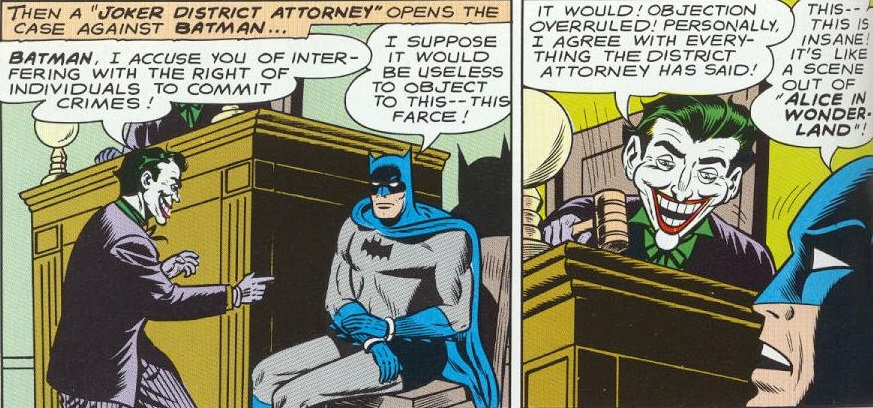 Batman #163
Batman #163
(Hey, it’s still less silly than most of Ally McBeal.)
Of all the efforts to combine Batman comics and the conventions of courtroom drama, though, my all-time favorite has got to be ‘The Trial of Titus Keyes!,’ originally published in Batman #20 (cover-dated December 1943-January 1944), written by Bill Finger, drawn by Bob Kane, inked by Jerry Robinson, and lettered by George Roussos.
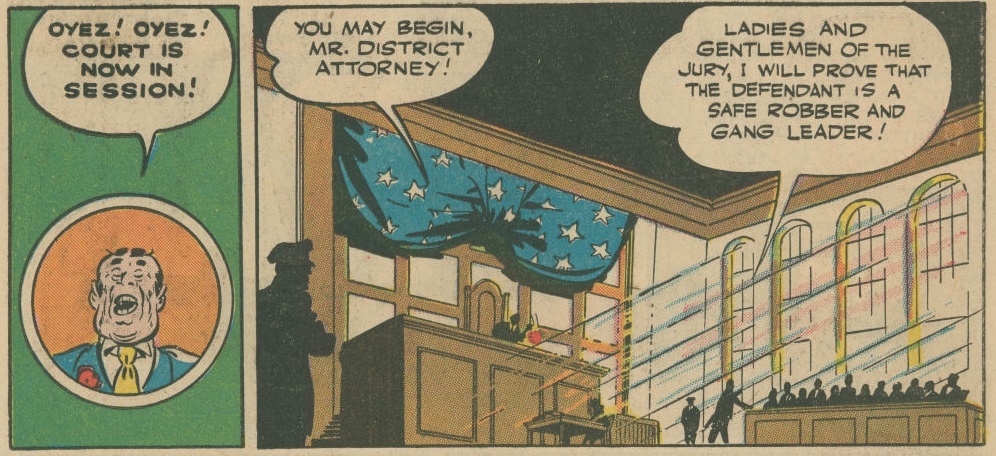 Batman #20
Batman #20
Bill Finger was in top form here, crafting a neat courtroom procedural around an innocent-looking man being trialed as an arch-criminal. The comic features many staples of the genre, such as agitated examinations and cross-examinations, a last minute surprise witness, and a plot twist every couple of pages.
Finger cleverly figured out a strategy to weave in the action scenes and madcap excitement readers expected from a Batman comic: basically, although the main narrative thread takes place in court, the witnesses’ testimonies become flashbacks revealing parts of the case, namely the parts where Batman and Robin kick butt and take names.
This gimmick has the added benefit of showing the Dynamic Duo through multiple outside eyes, creating a Citizen Kane-like effect.
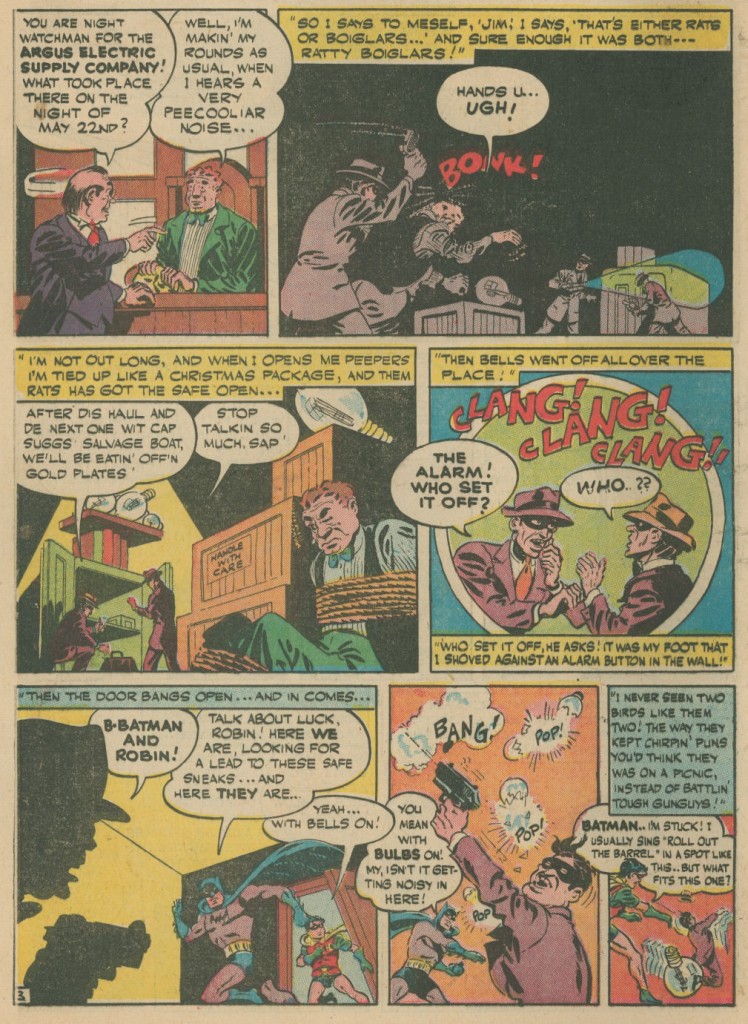 Batman #20
Batman #20
What makes ‘The Trial of Titus Keyes!’ so great is that we don’t merely get boring, passive witnesses recounting the actions of Batman and Robin… Instead, Bill Finger’s script instills each character with a different voice and personality. According to the witnesses’ accounts, most of them even took some active role in helping out the Dynamic Duo (which may implicitly suggest that they are unreliable narrators taking the chance to brag).
This is such a packed little 12-page gem of a comic. Besides lighthearted jokes and a thrilling mystery, we get plenty of historical flavor through references to the 1929 stock market crash, war bonds, and Joe Dimaggio. What’s more, even though the plot, when you get down to it, is a relatively conventional crime yarn, the creators managed to include one gloriously over-the-top set piece, as the Caped Crusader fights a guy underwater with an mechanized diving-bell!
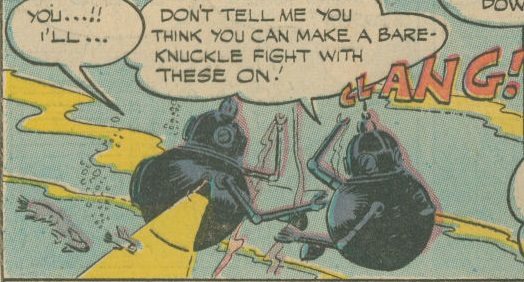 Batman #20
Batman #20
And if all this is not enough to convince you to track down ‘The Trial of Titus Keyes!’ (collected in Batman: The Dark Knight Archives, vol.5 as well as in The Batman Chronicles, vol.11), bear in mind that the same issue also contains a story in which the Joker apparently discovers a way to travel through time – and boy do things get out of control very fast…

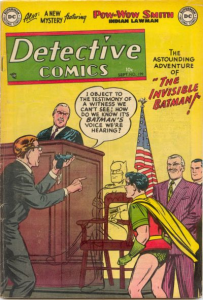
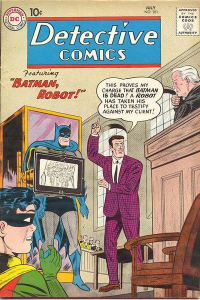
Aww, not one mention of Two-Face? That trial he held against himself in No Man’s Land kicked ass!
True. I’m saving that one for a mega-post on NML!